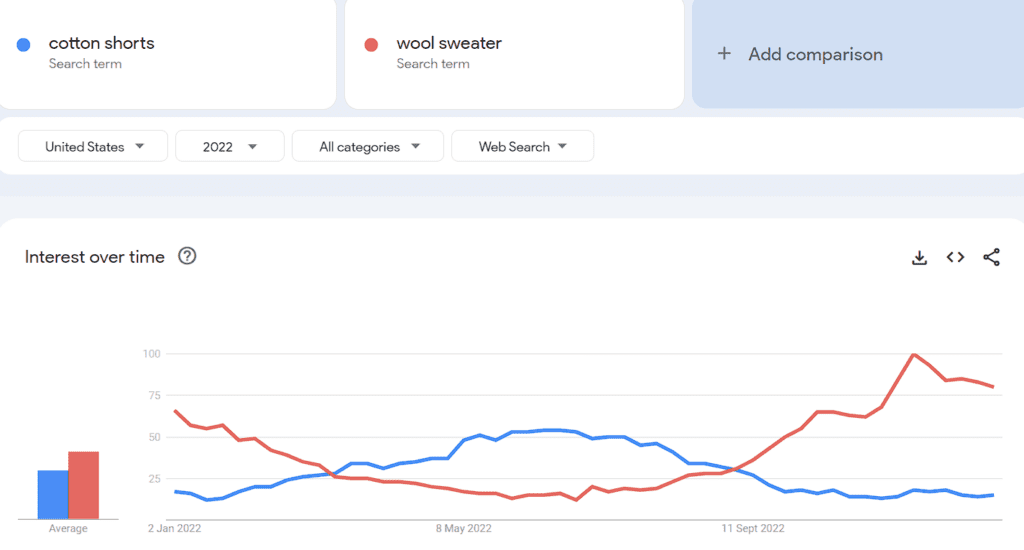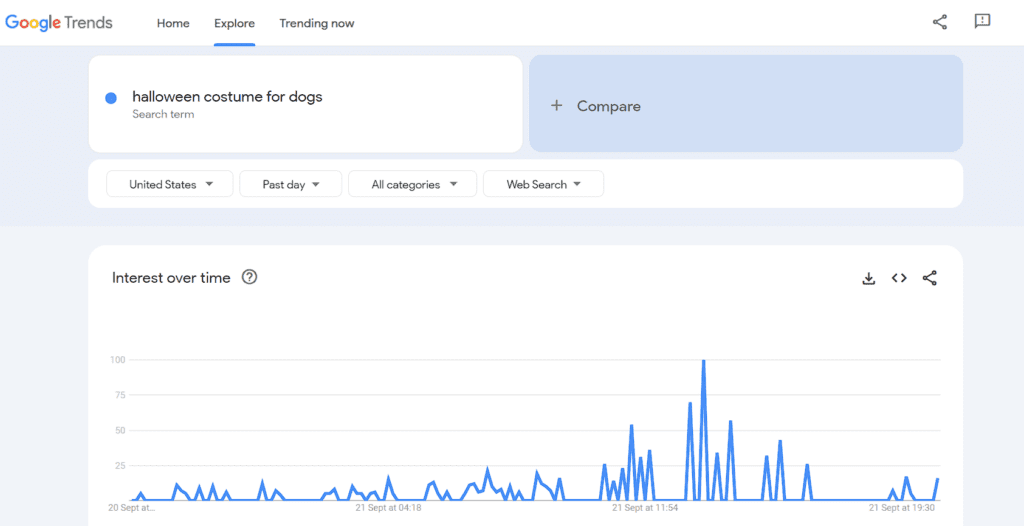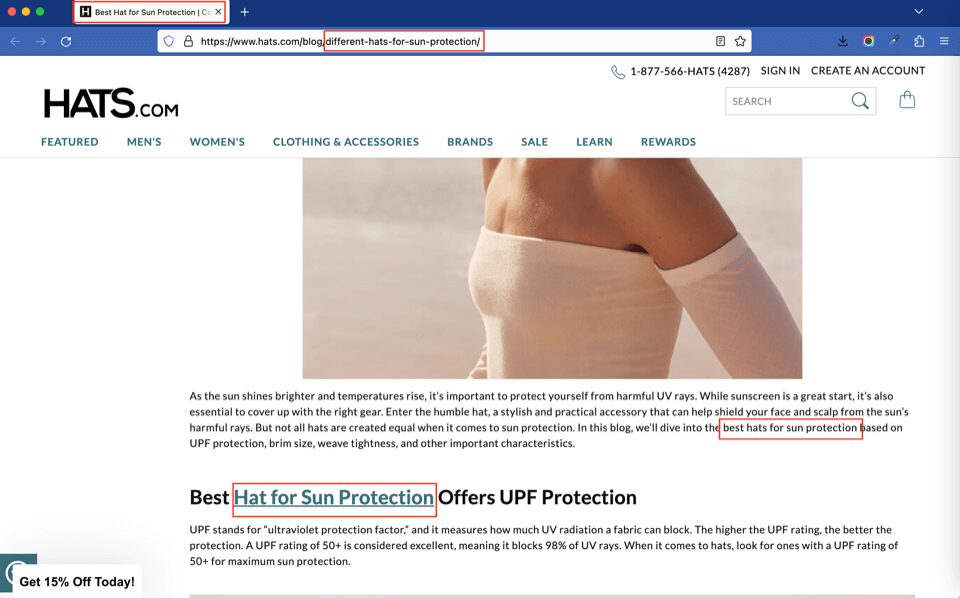Consumer behaviors shift throughout the year and demand for different products and services rises and falls with the changing seasons. What’s popular during Christmas may not appeal to your customers during summer and vice versa. So it’s important to align your SEO strategy with the needs of your customers during different times of the year.
In this post, you’ll learn what seasonal SEO is and how you should be optimizing your site for recurring trends to stay ahead of the competition.
Table of Contents
What Is Seasonal SEO?
Seasonal SEO refers to optimizing your website to capitalize on the predictable annual fluctuations in search behavior and consumer interest. These annual events could be a specific season such as summer or winter, a month such as December, or a major event such as holidays like Christmas, Black Friday, Valentine’s Day, etc. In fact, holidays alone account for 30% of the annual sales for businesses.
For instance, if you’re a clothing brand, you’ll want to promote shorts during summer and spring whereas during winter and fall you’ll want to focus on sweaters because it’s when consumers are more likely to be searching for these products.
See this comparison of the search volume of “cotton shorts” and “wool sweater” for 2022 in the US to better understand what we mean:

Optimizing for seasonal SEO broadly involves:
- Identifying upcoming trends
- Creating content relevant to these trends
- Tweaking your on-page SEO to drive more traffic to your website during the peak of these trends
Why Should You Care About Seasonal SEO?
Financial peaks and valleys are a part of every business so it’s important to know how to leverage the high seasons for marketing your products and services to balance out the loss of revenue during low seasons. By putting your pages in the top spot during important seasons, you can get up to 34% of the organic traffic to visit your website.
Optimizing for seasonal SEO has many other benefits beyond boosting your conversions. It helps you:
- Build trust and authority with relevant content
- Learn more about consumer behavior
- Identify emerging opportunities and adapt
- Improve your long-term SEO ranking
How to Optimize for Seasonal SEO
Now that you know the importance of seasonal SEO and why you should be optimizing for it, let’s talk about the actual actionable steps you should take starting from identifying upcoming trends and events.
How to Find Trends for Seasonal SEO
If you’re unsure of the seasonality of your business, use these tools to find out:
Google Search Console – Undoubtedly one of the most powerful tools for SEO, Google Search Console gives you data about your website’s performance over time as well as what’s trending on your website currently.
Google Analytics – This tool is essential for gaining deeper insight into how your customers are engaging with different pages on your website and how you should be optimizing the content for better seasonal SEO performance. Learn how to use Google Analytics to understand more about how users engage with your site.
Google Trends – Google Trends allows you to see how search volume differs over time so you can determine when’s the best time to market your product. Enter a keyword to see whether it’s trending or go to the Trending Now section for the top trends.

Google Keyword Planner – If you need help choosing keywords, Google Keyword Planner is a handy tool to consider. You can see search volumes and forecasts for specific keywords or discover similar keywords to the ones you’re targeting.
Semrush – This comprehensive tool allows users to perform many actions. One important ability it has is to analyze your competitors’ traffic and identify the keywords they’re targeting. You can also compare your website’s performance against theirs to see if you’re losing out on seasonal traffic somewhere.
Optimizing Content for Seasonal SEO
After you’ve gathered the data on seasonal trends and created a strategy, it’s time to implement it through the content on your website.
1. Create Seasonal Content

Companies that create high-quality content, such as blogs, receive 55% more visitors. So creating valuable and highly engaging seasonal content is key to driving qualified traffic to your website when the time is right.
Focus on products and services that your audience would need at the time. For example, if back-to-school is right around the corner, promote stationery items with blogs such as “10 Essential Back-to-School Supplies” or “The Complete Back-to-School Supplies Checklist”.
Plug your products in but first ensure that the content is genuinely helpful to your customers and satisfies their search intent.
2. Update Old Content
Optimizing for seasonal SEO doesn’t necessarily mean you have to keep pushing out new content every year. Annual events/holidays happen every year so you can simply update the content each year instead of creating new ones. For example, a “Thanksgiving Gifts for 2020” blog can easily become a “Thanksgiving Gifts for 2024” blog.
Swap out the dates, update factual information such as statistics, add new relevant information, and then republish to refresh existing content. A good practice to follow when optimizing for seasonal SEO is to avoid mentioning dates wherever possible, especially in the URL so the content remains evergreen. You can also create separate category pages for popular events such as Christmas and Valentine’s Day and add those to the header and footer a month prior if the event is relevant to your business.
3. Use the Right Keywords

Keywords are at the heart of SEO so choosing the right ones is critical to your website’s success. The tools we shared earlier for identifying trends should give you a good idea of what keywords to use when you’re optimizing for seasonal SEO. Ensure you have at least one primary and one secondary keyword. Tertiary and so on can help, but aren’t as vital.
Try to include your primary keyword in the metadata, H1 tags, image alt texts, and throughout the content. Keep an eye on the performance and swap the keywords if they’re not performing well. If you’re refreshing old content, see how the piece has performed in the past and update with new keywords to improve performance if required.
If you need help with keyword research, see our “How to Drive Traffic to Your Shopify Store With SEO” guide which covers it in more detail.
4. Add Relevant Images

Images are essential for engaging your audience and helping them visualize the content on your website. They also break down the monotony of lengthy paragraphs and make it easier to consume the content on a page. This is why optimizing for seasonal SEO also entails updating your website with relevant graphics, images, and other visual modes of communication.
For example, if you’re selling Christmas-themed cakes, you’ll want to add images and graphics with Santa Claus, reindeer, or pine trees to convey the seasonal tone. Use appealing images and you’ll even grab the attention of customers who came to shop for something entirely different.
Optimizing for Seasonal SEO With Coalition Technologies
If you want to cast a wider net than your competitors, then you need to plan in advance. It requires time and patience to create quality content, improve your website experience, build quality backlinks, refine your strategy, and get your site indexed and ranked before the peak season arrives. You’ll have to learn from past strategies and constantly stay in the loop with emerging trends to capitalize on them when the time is right.
At Coalition Technologies, we’ve been helping businesses stay ahead of the curve for over a decade with data-driven seasonal SEO strategies that actually work. We have the industry expertise that optimizing for seasonal SEO requires with proven results to back it up. If you need a helping hand for successful SEO implementation or an expert to review your strategy for free, give us a call at (310) 827-3890 or send us a message with your query. We’re always happy to help!


